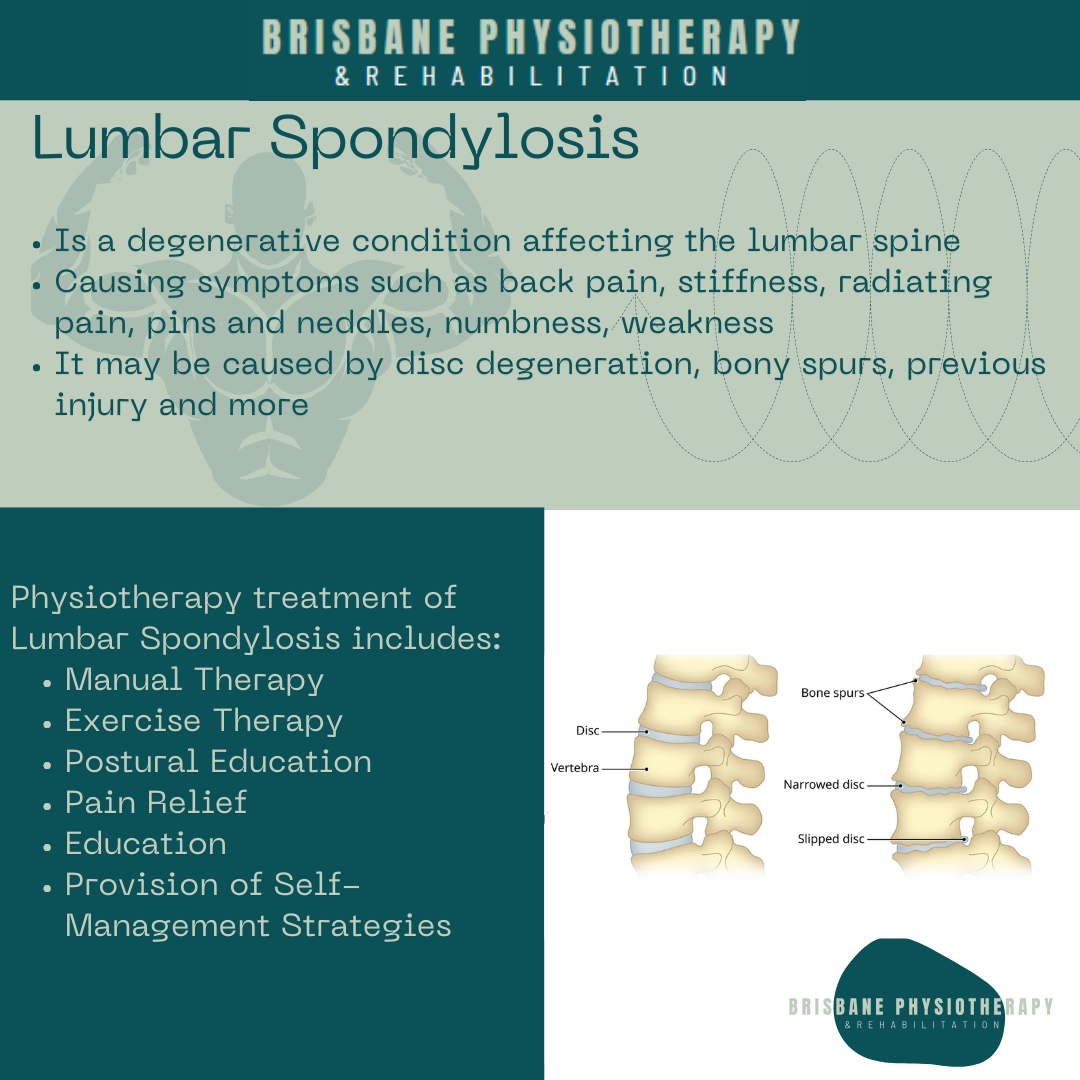What Is Lumbar Spondylosis?
Lumbar Spondylosis
Lumbar spondylosis is a degenerative condition affecting the lower part of the spine (lumbar region). It is characterised by the wear and tear of the intervertebral discs, facet joints, and vertebrae, leading to symptoms such as lower back pain, stiffness, and reduced mobility. Similar to cervical spondylosis, lumbar spondylosis is common with aging and can result in the formation of bone spurs (osteophytes) and narrowing of the spinal canal (spinal stenosis), which may compress spinal nerves.
Symptoms of Lumbar Spondylosis
The symptoms of lumbar spondylosis can vary in severity and may include:
Lower Back Pain: Persistent or intermittent pain in the lower back, often described as a dull ache or sharp pain.
Stiffness: Reduced flexibility in the lower back, making it difficult to bend or twist.
Radiating Pain: Pain that travels from the lower back to the buttocks, thighs, or legs, often due to nerve compression.
Numbness and Tingling: Sensations of pins and needles in the legs or feet.
Weakness: Muscle weakness in the legs, which can affect walking and balance.
Loss of Bladder or Bowel Control: In severe cases, compression of the spinal cord can lead to loss of bladder or bowel control, a condition known as cauda equina syndrome, which requires immediate medical attention.
Causes of Lumbar Spondylosis
Lumbar spondylosis is primarily caused by age-related changes in the lumbar spine, but several factors can contribute to its development:
Degenerative Disc Disease: Over time, the intervertebral discs lose hydration and elasticity, leading to disc shrinkage and decreased cushioning between vertebrae.
Bone Spurs (Osteophytes): As the discs deteriorate, the body may produce extra bone to strengthen the spine. These bone spurs can press on nerves, causing pain and other symptoms.
Herniated Discs: The discs may protrude and press on spinal nerves.
Ligament Stiffness: Ligaments in the lumbar region can become stiffer with age, reducing flexibility and contributing to pain.
Genetics: A family history of lower back pain or arthritis can increase the likelihood of developing lumbar spondylosis.
Injury: Previous back injuries can predispose individuals to spondylosis.
Occupation: Jobs that involve heavy lifting, repetitive movements, or prolonged periods of sitting (especially with poor posture) can accelerate wear and tear on the lumbar spine.
Obesity: Excess body weight can put additional stress on the lower back, increasing the risk of degenerative changes.
Management and Treatment
Physiotherapists play a crucial role in managing lumbar spondylosis, focusing on relieving pain, improving mobility, and enhancing overall function. Treatment is usually tailored to the individual's specific symptoms and severity of the condition. Here are some common physiotherapy interventions for lumbar spondylosis:
Manual Therapy
Physiotherapists use hands-on techniques to mobilise and manipulate the lumbar spine. This can help reduce pain, improve joint function, and increase range of motion.
Exercise Therapy
A personalised exercise program is designed to strengthen the muscles supporting the spine, improve flexibility, and enhance overall physical function. Exercises may include:
Strengthening Exercises: Targeting the surrounding musculature to provide better support to the lumbar spine.
Flexibility Exercises: Stretching exercises to improve flexibility and reduce stiffness.
Aerobic Exercises: Low-impact activities such as walking, swimming, or cycling to improve overall fitness and help with weight management.
Postural Education
Physiotherapists teach proper posture techniques to reduce strain on the lower back during daily activities. This includes:
Ergonomic Advice: Recommendations for optimal workstation setup, proper lifting techniques, and safe body mechanics.
Postural Training: Exercises to correct and maintain proper posture.
Pain Relief Modalities
Various modalities can be used to alleviate pain and reduce inflammation, including:
Heat and Cold Therapy: Physiotherapists can provide advice regarding applying heat to relax muscles and increase blood flow, or cold to reduce inflammation and numb pain.
Education and Self-Management
Physiotherapists educate patients on managing their condition at home and preventing further deterioration. This includes:
Home Exercise Programs: Tailored exercises to be performed regularly at home.
Lifestyle Modifications: Advice on maintaining a healthy weight, staying active, and avoiding activities that exacerbate symptoms.
Functional Training
Training patients to perform daily activities safely and effectively, minimising strain on the lower back.
While lumbar spondylolysis can be caused by a variety of factors and cause a variety of symptoms, with proper treatment, individuals with the condition can manage and improve symptoms and pain.
